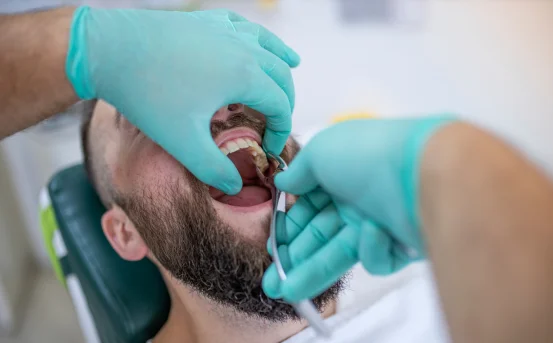Introduction
Cancer is a word that evokes strong emotions in any context, but when it affects children, the impact is even more profound. Pediatric oncology is the branch of medicine dedicated to diagnosing and treating cancers in children, adolescents, and young adults. While cancer is relatively rare in this population, the types that occur in children often differ significantly from those in adults. These cancers tend to be more aggressive but also more responsive to treatment. Understanding the types of pediatric oncology can help families, caregivers, and healthcare providers stay informed and prepared for the journey through diagnosis and treatment.
Types of Pediatric Oncology
- Leukemia :- Leukemia is the most common type of cancer in children, accounting for nearly 30% of all pediatric cancers. It affects the bone marrow and blood, primarily targeting the white blood cells. Acute lymphoblastic leukemia (ALL) is the most prevalent form in children, followed by acute myeloid leukemia (AML). Symptoms often include frequent infections, fatigue, unexplained bruising, and bone pain. Treatment usually involves chemotherapy, and in some cases, bone marrow transplantation may be required.
- Brain and Central Nervous System (CNS) Tumors :- Brain tumors are the second most common cancers in children. Unlike adult brain tumors, pediatric brain tumors often occur in the lower parts of the brain, such as the cerebellum or brainstem. Medulloblastomas, astrocytomas, and ependymomas are the primary types seen in children. Symptoms depend on the tumor’s location but may include headaches, vision problems, nausea, or issues with balance and coordination. Treatment typically combines surgery, radiation therapy, and chemotherapy.
- Neuroblastoma :- Neuroblastoma is a cancer that begins in immature nerve cells, usually arising in the adrenal glands located above the kidneys. It is most common in infants and very young children. Symptoms vary widely, ranging from abdominal pain and swelling to bone pain or a noticeable lump. This cancer is unique in that some cases may resolve spontaneously, while others are highly aggressive. Treatment involves chemotherapy, surgery, radiation therapy, and immunotherapy in advanced stages.
- Wilms Tumor :- Wilms tumor is the most common kidney cancer in children, typically affecting those under the age of 5. It usually presents as a painless swelling in the abdomen and may be accompanied by fever, blood in the urine, or high blood pressure. Most cases are confined to one kidney and are highly treatable when diagnosed early. Treatment often includes surgery to remove the affected kidney, followed by chemotherapy and sometimes radiation therapy.
- Lymphomas :- Lymphomas affect the lymphatic system, which includes lymph nodes, the spleen, and the thymus gland. In children, the two main types are Hodgkin lymphoma (HL) and non-Hodgkin lymphoma (NHL). Hodgkin lymphoma tends to occur in adolescents and has a high cure rate. Non-Hodgkin lymphoma, on the other hand, is more aggressive but also responds well to intensive therapy. Symptoms can include swollen lymph nodes, night sweats, weight loss, and fatigue. Treatment typically consists of chemotherapy and, less commonly, radiation therapy.
- Retinoblastoma :- Retinoblastoma is a rare eye cancer that primarily affects children under the age of 5. It develops in the retina and can occur in one or both eyes. An early sign is a white reflection in the pupil, often seen in photographs taken with flash. Other symptoms include vision problems and eye redness or swelling. Treatment may involve laser therapy, cryotherapy, chemotherapy, radiation, or even removal of the affected eye in advanced cases. Early detection is critical to preserving vision and life.
- Bone Cancers (Osteosarcoma and Ewing Sarcoma) :- Bone cancers are more common in teenagers than in younger children. The two primary types are osteosarcoma and Ewing sarcoma. Osteosarcoma typically develops in the long bones, such as the femur, while Ewing sarcoma can appear in bones or soft tissues. Both types cause pain, swelling, and limited movement in the affected area. Treatment involves chemotherapy and surgery, which may include limb-sparing procedures or, in rare cases, amputation.
- Rhabdomyosarcoma :- Rhabdomyosarcoma is a soft tissue cancer that arises from skeletal muscle cells. It can occur in various parts of the body, including the head, neck, bladder, or limbs. It is most commonly diagnosed in children under 10 years of age. Symptoms depend on the tumor’s location and may include a noticeable lump, bleeding, or difficulty urinating. Treatment generally involves chemotherapy, surgery, and sometimes radiation therapy.
- Hepatoblastoma :- Hepatoblastoma is a rare liver cancer that occurs almost exclusively in young children, often under the age of 3. It may present as abdominal swelling, pain, or weight loss. This type of cancer is more common in children with certain genetic conditions or low birth weight. Surgical removal of the tumor followed by chemotherapy is the standard treatment. In some cases, a liver transplant may be necessary.
Conclusion
Pediatric oncology encompasses a wide range of cancer types, each with its unique challenges and treatment approaches. From blood cancers like leukemia to solid tumors in the brain or abdomen, understanding the types of pediatric cancers is crucial for timely diagnosis and effective treatment. Advances in medical science have significantly improved survival rates for many childhood cancers, making early detection and specialized care essential components of pediatric oncology. As we continue to learn more about these diseases, the goal remains the same: to provide the best possible care and outcomes for every child facing cancer.























